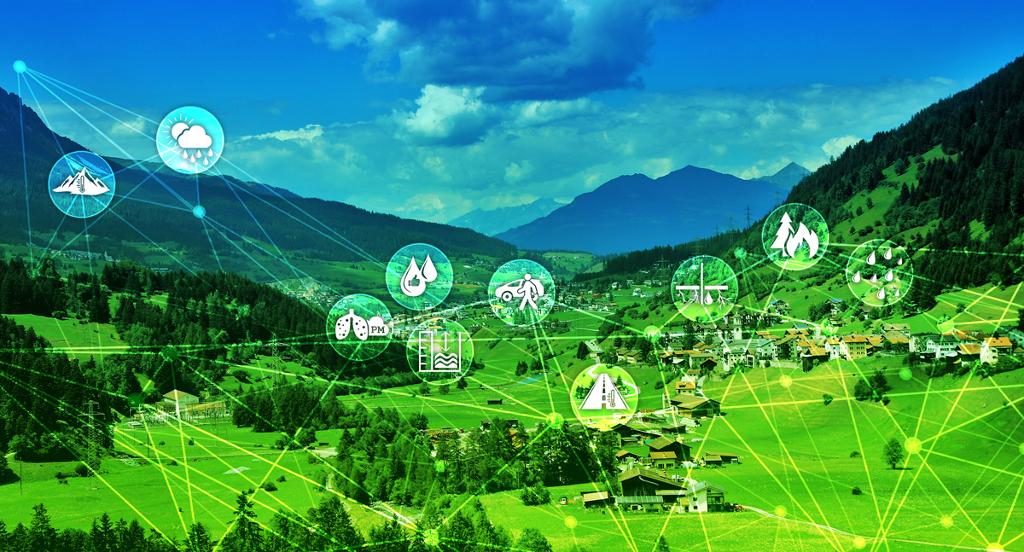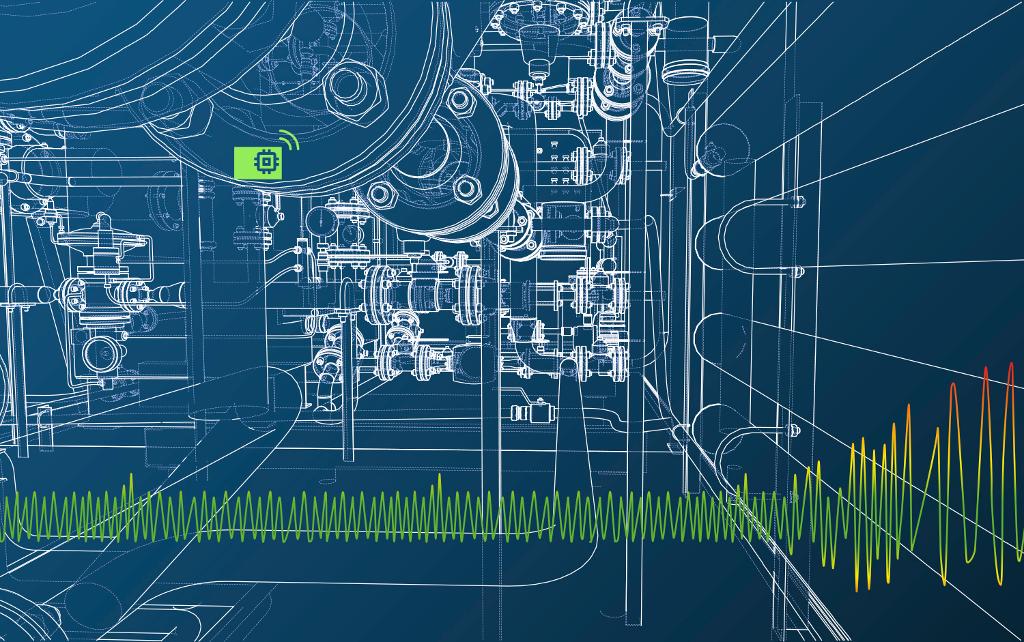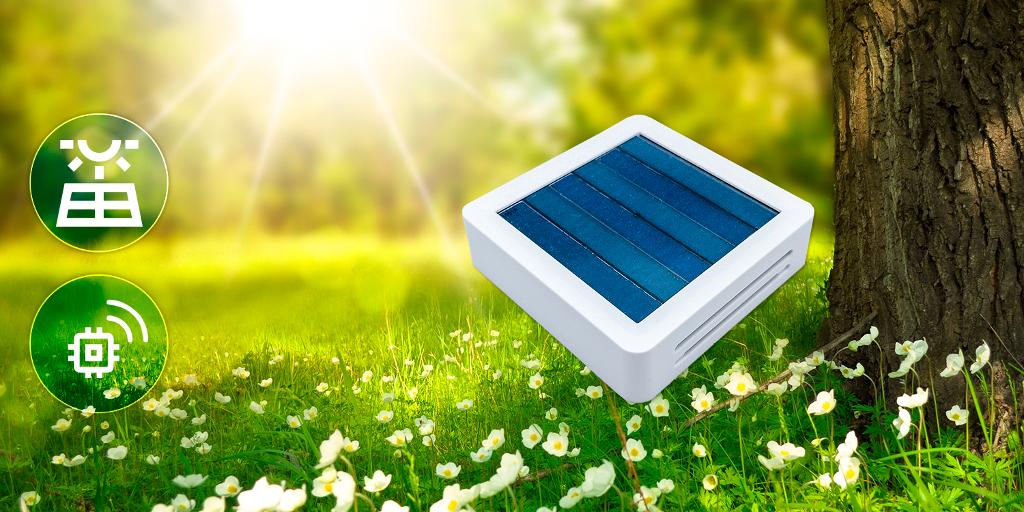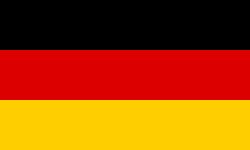The sensor-based Internet of Things enables practical solutions for rural areas, preventive maintenance for industry and sustainable use of resources. LoRaWAN as a wireless technology for IoT remains particularly important for use in rural areas.
Schimberg and Berlin, December 6, 2023 – Alpha-Omega Technology GmbH & Co. KG is an expert in IoT infrastructures and operates the largest online shop for products in Low Power Wide Area Networks, or LPWAN for short, in German-speaking countries. For more than five years, the local company has been working with the municipality of Martinfeld in the Eichsfeld region of Thuringia to implement projects for a sensor-based Internet of Things (IoT) under realistic conditions. In the model village SMARTinfeld, it is possible to experience how IoT solutions work for an entire community and thus make village life sustainable in the long term. SMARTinfeld was among the winners of the innovation competition “Digital Places in the Land of Ideas 2023”. The company's experts see the following trends for 2024 in the market for sensor-based IoT applications: IoT enables low-threshold and practical solutions for smart villages, and for industry in combination with machine learning (ML), preventive maintenance and, in principle, efficient use of resources in the interest of sustainability. Long Range Wide Area Network, or LoRaWAN for short, as a radio technology for IoT remains particularly important for use in rural areas.
Trend 1: IoT for digital solutions in smart villages
Smart city projects are usually limited to urban environments and do not take into account the special needs of rural communities. To advance digitalization here, solutions are needed that are tailored to low population densities. Be it smart village lighting, measuring temperature at high altitudes, or monitoring water levels and water quality. Jan Bose, founder and CEO of Alpha-Omega Technology, explains: “For the latter use case, distance sensors offer a good response to rising water levels. This can reduce flood damage and save significant costs.” The aim of IoT applications must be to maintain a rural way of life while integrating technology and innovation. Rural communities differ from urban areas not only in terms of use cases. As a rule, several municipalities and thus authorities are involved – the need for coordination increases. In addition, people in rural areas often identify strongly with their community.
The answer is IoT applications based on LoRaWAN radio technology. The advantage of this technology for transmitting the collected data lies in the minimalist data volumes. They ensure low power consumption while providing sufficient data protection because only the absolutely necessary data is used. LoRaWAN also has an enormous range – in rural areas, this can be up to ten kilometers. “By positioning the gateways at a higher level, the communities achieve excellent coverage. Furthermore, it is not necessary to dig up roads to lay cables in order to get the network up and running. What is needed is scalable, license-free IoT technology with a broad range of applications, such as LoRaWAN and open-source software,” emphasizes Jan Bose.

The digitalization of rural communities requires solutions that are tailored to a low population density. Be it smart village lighting, temperature measurement on a mountain or monitoring water levels and water quality (Graphic: Alpha-Omega Technology).
Trend 2: Integrating AI and ML into industrial IoT
Industrial companies in Germany are under pressure to increase efficiency and to find qualified personnel in times of a shortage of skilled workers. “Machine learning is, of course, not a panacea here. However, the technology can relieve the burden on employees by taking over specific tasks. At the same time, the company saves resources and thus money,” says Jan Bose. ML-based LoRaWAN sensors record and analyze environmental information and provide staff with information on when and where action is needed. This includes, for example, the maintenance of large machine systems. The sensors can learn the emitted vibration patterns and use this vibration signature to determine whether maintenance is required. “Instead of carrying out maintenance too often and thus not using working hours efficiently, maintenance is only carried out when it is necessary. At the same time, the probability of the systems failing is significantly reduced because a warning is issued of possible faults based on a deviating vibration signature,” explains Jan Bose. IoT technologies with an open ecosystem such as LoRaWAN offer the advantage that they can be used where they are needed. In addition, companies can find a wide range of sensors and applications on the market. This makes them independent, because they do not have to tie themselves to a single provider. Further advantages are the low-threshold use and the transparency of which data is collected and evaluated.
One example of this use case is the BoB Assistant vibration sensor from the manufacturer Watteco. The device analyzes the vibration signature of industrial plants and machines. Deviations in the various vibration patterns at a later stage indicate undesirable conditions and wear at an early stage. Preventive maintenance can thus be optimized, reducing downtime to a minimum. The sensor transmits the analysis results and runtimes of the machine via the energy-saving LoRaWAN protocol. The vibration sensor is typically used in water pumps, compressors, air filters, cement mixers and transformers.

ML-based LoRaWAN sensors collect and analyze environmental information in industrial plants and alert staff when and where action is needed (Graphic: Alpha-Omega Technology).
Trend 3: IoT for sustainability and environmental protection
IMore and more IoT companies are adapting to the trend of sustainability. This initially includes the products themselves: for example, they may have their own integrated solar supply or the housings are made from recycled materials. “In addition, we are seeing more and more demand for sensors to monitor the environment within projects for greater sustainability on iot-shop. Typical applications include monitoring the soil moisture of specially protected trees or monitoring job sites to deploy personnel as needed rather than on a regular basis. This not only conserves human resources, but also optimizes accompanying circumstances,” reports Jan Bose.
Problems such as increased heating costs can also be addressed relatively quickly and cost-effectively with the help of IoT sensors: automated heating control can be implemented in a large building in a short period of time. In most cases, it is not necessary to remove the old heating system and install a new one. This is because the IoT technology can be set up on top of the old system. There is also no need to replace the radiators in order to implement a digital, automated heating control system. It is sufficient to retrofit the heating valve with an IoT heating valve. Jan Bose emphasizes: “This saves resources, energy costs, and advances digitalization – and with a very efficient cost-benefit ratio.”

IoT sensors for monitoring the environment are increasingly in demand in projects for greater sustainability (Graphic: Alpha-Omega Technology).
LoRaWAN trend technology
LoRaWAN stands for Long Range Wide Area Network and belongs to the group of Low Power Wide Area Networks, or LPWAN for short. This radio technology requires little energy to transmit measurement and sensor data over long distances. In rural areas, this can be up to ten kilometers. The batteries in the sensors last for many years. Users build their own infrastructure and are thus independent of the providers of the large mobile networks. For LoRaWAN, the market also offers a wide range of sensors for applications outside the classic spectrum of heating valves or parking sensors.
Material Press Release:
IoT trends 2024: Solutions for smart villages, support for industry and for the sustainable use of resources

